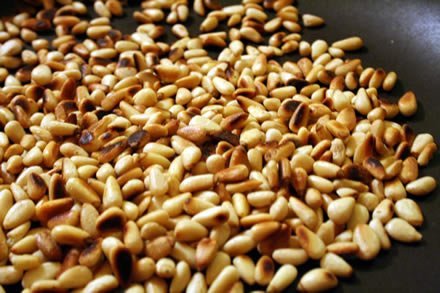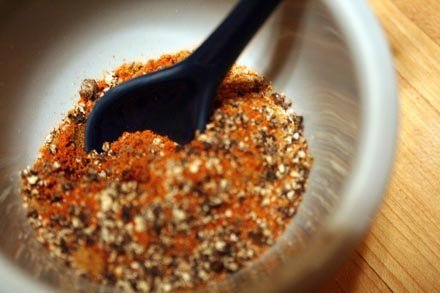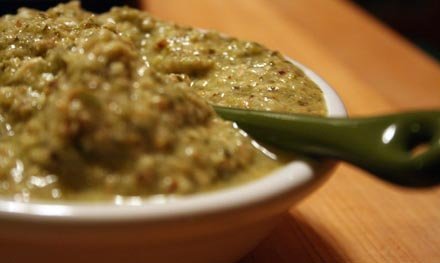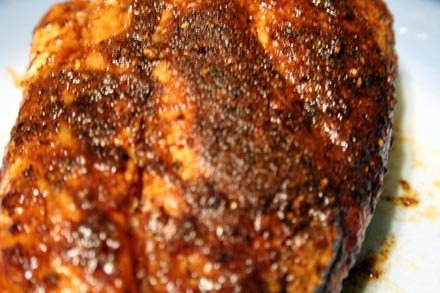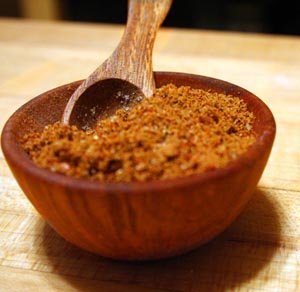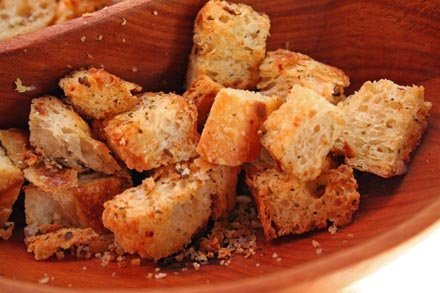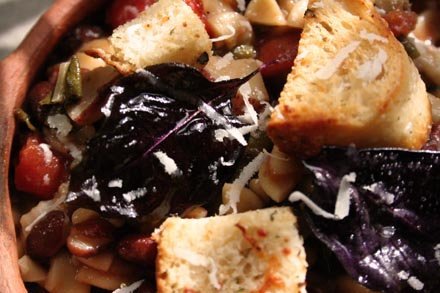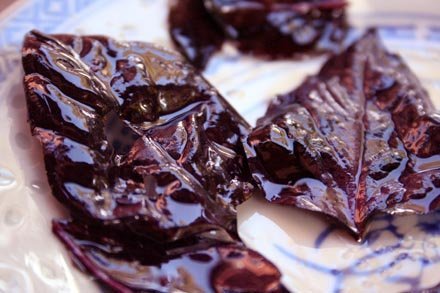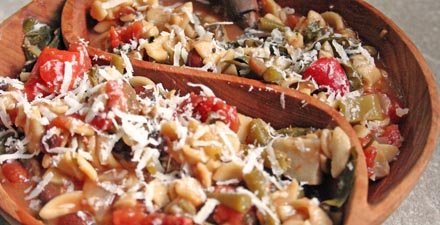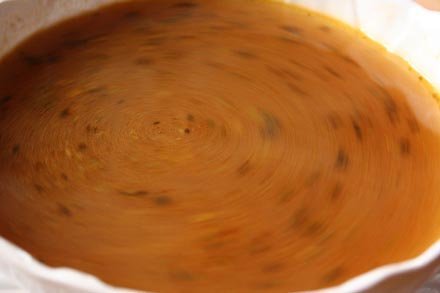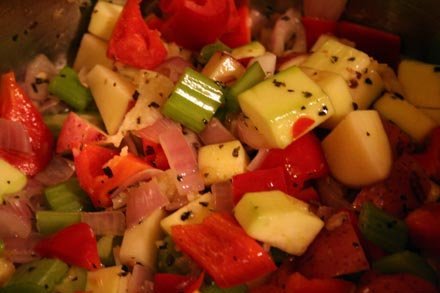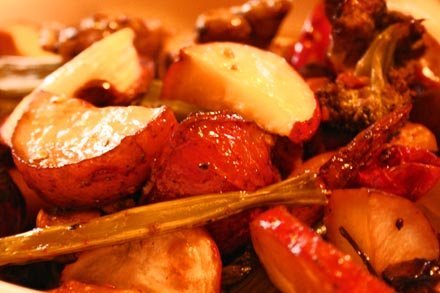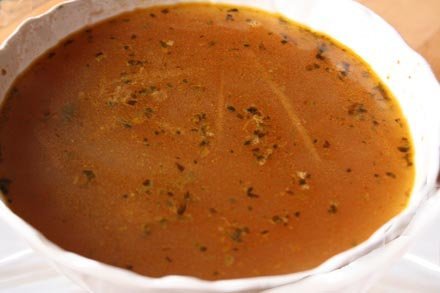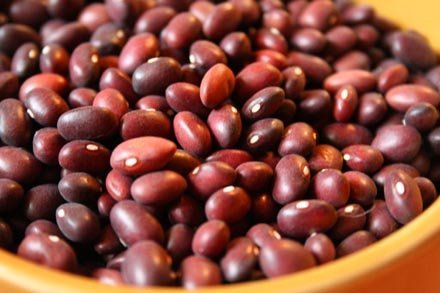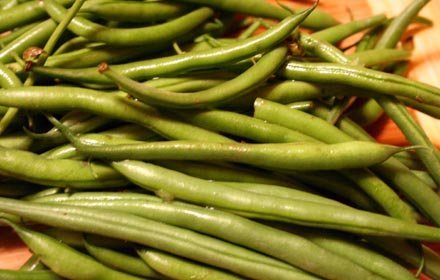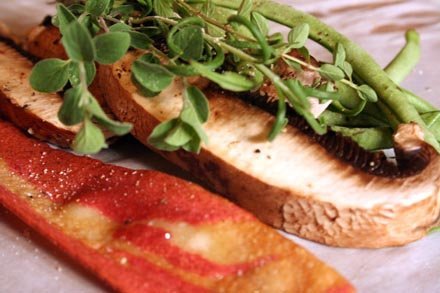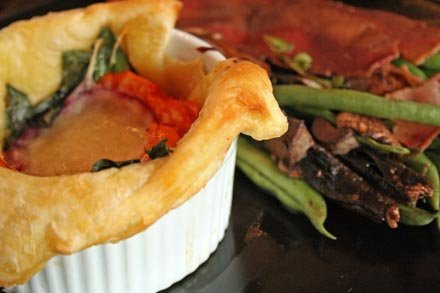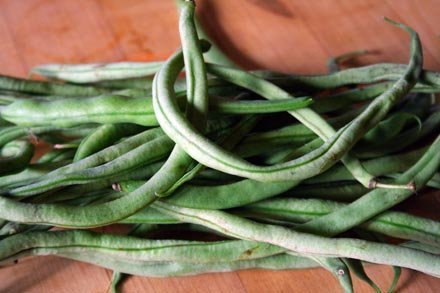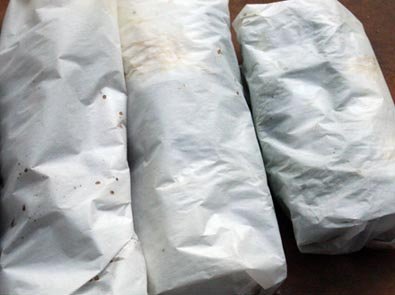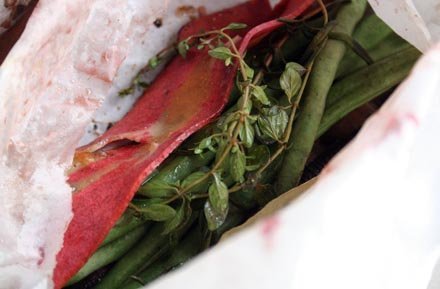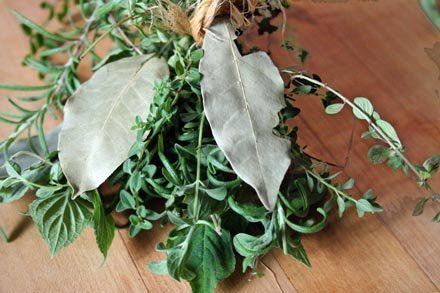So what, if what was born as an impromptu, mid-week dinner party for 8, including a Swiss Italian who was surfing through our city, consisted, in the end, of just five of us, Simon and I included, and we don’t count as guests since we live here? And what if one of the guests who did make it had a gurgling, lurching digestive tract and no interest in actually eating? What if, when I pulled the cork from the Albarino, the musty nose-alert delivered the bad news: that wine was corked? And so what then, if I accidentally scorched the pine nuts and the fan, which was shoved into the window to remedy the sudden air quality issue, shorted out and smelled worse than the burnt pignoles? The only thing that could happen next was for Grendel (feline) to expel his previously eaten meal onto the carpet, just four minutes before the first (of only 3) guest walked through the door. And what if the daylight had faded and, resigned to indoor lighting, I set the white balance on the camera incorrectly and all the photos I had taken for you, dear readers, came out fuzzy and orange?
So what? Those fish tacos sure were tasty.
And in the end we got to meet our Couch-Surfing Italian from Lugano, Switzerland, which was the real reason the dinner party was called together in the first place.
Do you all know about Couch Surfing? Our friend Amy introduced us to it, and what a fantastic idea — world travelers, unite! Couch Surfing’s self-declared mission is to improve the world, one couch at a time. Here’s how it works: when you sign up and create a profile, you can offer to host travelers who are coming to your corner of the world. This can be as casual as meeting them for coffee and giving them some good tourism tips, or you can extend your couch (or spare bedroom) to them and let them stay in your home. You also have the opportunity to surf other people’s couches when you travel.
Gianni was a physics-degreed, applied engineering Ph.D.ed, artificial intelligence engineer who was surfing at Amy’s while he attended a conference so intellectually out of my bounds that I can’t even tell you what it was about. Robots or something. Or as Gianni describes himself, “I am a scientist, cooking up my brain with bio-inspired algorithms, collective intelligence, robotics, mobile networks…”. Plus he likes food and wine.
Here’s a photo of Simon and Gianni, geeking out.
He was so delightful, and the concept so cool, that Simon and I signed up. And next week we’ll be hosting our first traveler, a Danish journalist who is here to cover the vice-presidential debates. When Simon and I are traveling later in the year, we’re planning to surf a couch or two.
The Recipe
We served Gianni the most un-Italian food we could think of: fish tacos. If he wasn’t being polite then his appetite indicates that he found the meal pleasing. The Albarino got switched out for a Shiraz, which worked just fine since the fish – and the tomatillo salsa – had a sturdy spiciness.
I used one of my favorite beans: Black Turtle beans. Those of you who have been reading for awhile (and have stellar memories) may cry foul, since I used Black Valentine Beans before, for the cupcakes. But those were Black Valentine Pole Beans, you see, and these are bush beans, harvested right out of my backyard. These taste quite similar to the pole beans – shiny and rich with definite chocolate overtones (making them ideal for Latin food), but they grow so much more efficiently in the garden. Next year I may do all bush beans…
I’m fond of secret ingredients, and this blackened fish has one: allspice. Though it’s traditionally a baking spice, this has a real role in savory dishes. In fact, its pen name is Jamaican pepper. The dried, ground berry from a Caribbean tree, it has a sharp, pungent, yet unexpectedly sweet flavor. Its name comes from the fact that it has hints of cinnamon, cloves, nutmeg and black pepper.
I made up a big batch of my tomatillo salsa, and it was the perfect match for these tacos. It added a sauce to otherwise dry ingredients, and the lime and citrusy-tomatillo flavors complimented the blackened fish without diluting its flavor. Click here for the recipe.
Blackened Red Snapper Tacos with Tomatillo Salsa and Black Valentine Beans
1 teaspoon cumin seeds
1 teaspoon cumin powder
½ teaspoon allepo (or cayenne) flakes
¼ teaspoon ancho powder
1/8 teaspoon coriander
¼ teaspoon sharp paprika powder
¼ teaspoon allspice
Salt and black pepper to taste
2 cloves garlic, sliced
3 tablespoons extra virgin olive oil
2 pounds fresh red snapper, thawed
Juice of 1 lime
2 cups tomatillo salsa
1 cup Black Valentine (or other black) beans
1 cup Monterey Jack or sharp cheddar cheese, shredded
Capers
1/2 cup cilantro, coarsely chopped
Sour cream for garnish
10 soft corn tortillas for tacos, or ready-made taco shells
Combine cumin seeds and powder, alleppo and ancho, coriander, paprika, salt, pepper and allspice in a mortar or small bowl. Stir well.
In mortar, pound the garlic into a paste.
In large skillet, heat ½ tablespoon of the olive oil. Stir in half the spice mixture and the garlic. Cook until the garlic is translucent, stirring often, about five minutes. Remove paste from skillet.
Rub fish with 1/2 tablespoon oil. Cut 3 to 4 diagonal slashes on each side. Use half the spice paste to rub into slashes and cavity of fish. Sprinkle remaining dry spice mix onto the fish and rub well. Set aside 15 minutes.
Prehate oven to 500 degrees. Place fish on a foil-lined baking sheet and drizzle with one tablespoon of the olive oil. Bake fish for 15 minutes, then turn off the oven and let fish reamin inside for another 10 minutes. Peel off skin and cut fish into small pieces. Squeeze the juice of the lime over the fish pieces.
If using the fresh tortillas (for soft tacos), steam them or microwave them for one miutes, until warm and soft. Fill the tortillas or taco shells with a mixture of the fish, black beans, cheese, capers and tomatillo salsa. Garnish with sour cream and fresh cilantro, and serve.


